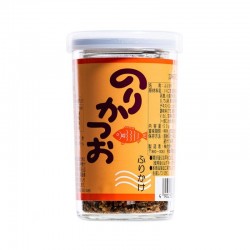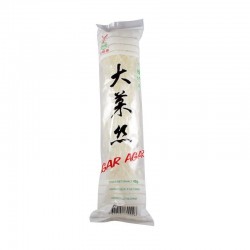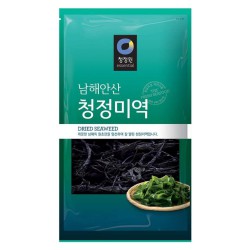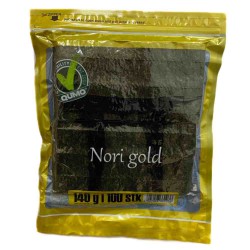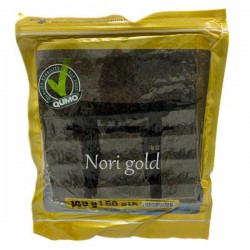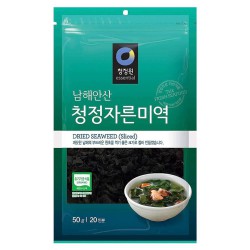Derfor har over 21.000 handlet her
Seaweed
Sushi seaweed for more than just sushi.
Most of us are familiar with the seaweed that's rolled around rice, fish and vegetables and served in small cut pieces that we dip in soy sauce. Sushi is an extremely popular dish that originates from Japan and has become a global luxury dining option. Here the seaweed holds the rice and fish together, making it easy to pick up with a pair of chopsticks. At the same time, the taste of the seaweed complements the different elements of the dish and is especially good with fish.
It's not only sushi that the seaweed is used for. It is also used for Japanese onigiri, which are small rice balls held together at the base by a strip of seaweed. These balls are often filled with, for example, salmon, pickled ume, katsuobushi — which is smoked and fermented tuna — or another type of salty or pickled filling. Onigiri are served both in restaurants and in specialty shops that have specialized in producing onigiri as takeaway.
Although its name is very similar to nigiri — a type of sushi in which a small rectangle of rice is formed and topped with a slice of fish — onigiri is not sushi. Therefore it should not be compared to sushi. One of the main differences is the seasoning of the rice: sushi rice is flavored with sugar, salt, and rice vinegar. For onigiri the rice has no seasoning and is therefore completely neutral.
Nori seaweed
Nori is the name of the seaweed used for sushi and onigiri. It is also used in dishes like soup or noodles, where it can add a little extra to the flavor or be used as a topping when the food is plated. In some places you can also get toasted nori that has been flavored and therefore can give a unique nuance to a dish. Typically the seaweed is seasoned with soy, sugar, mirin, sake and various spices. A product that closely resembles it is aonori, which is also made from seaweed. This type of seaweed, however, is not intended for use in sushi but rather as a seasoning for dishes like okonomiyaki or yakisoba.
Kombu - Edible seaweed
Nori and aonori, however, are not the only types of edible seaweed that flourish in Asian kitchens. Kombu is also a commonly used ingredient in many dishes. Kombu is used as one of two ingredients to make dashi, a soup stock that is the foundation of a wide range of dishes. Kombu and bonito flakes are combined with hot water, from which they release an intense flavor.
Dried seaweed for many purposes.
Dried seaweed is used for many different purposes in the culinary world, and one of them is as a popular spice. furikake. Furikake is a mixture of a number of different ingredients, including dried seaweed, dried fish, sesame seeds, the popular seasoning MSG, and sometimes small pieces of freeze-dried egg. Furikake can be sprinkled on everything from rice and vegetables to eggs and onigiri. One could say that dried seaweed is a common denominator in many Japanese dishes.
FAQ (Frequently Asked Questions)
What is seaweed?
Seaweed is also known as macroalgae and encompasses several groups of larger, multicellular marine algae. Some of these are edible and are used especially in Asian cooking, where they form the basis of various dishes and are used as a seasoning.
Where can one buy seaweed?
You can buy edible seaweed at Den Kinesiske Købmand and in selected supermarkets. You'll typically find nori, the seaweed used for sushi. If, however, you need to get hold of more specific products like kombu or furikake, you'll have to go to a specialty supermarket.
Where can you buy seaweed for sushi?
You can get seaweed for sushi, called nori, in several different places. Here with us Den Kinesiske Købmand Among other things we sell nori, and you will also be able to find it in larger supermarkets. However, there is a difference in quality, as well as in the quantities you can buy. The most authentic seaweed for sushi can be obtained from a specialty grocer such as Den Kinesiske Købmand.
What can seaweed be used for?
Seaweed can be used for many different things, and you might know it best from sushi. In addition, nori is used for onigiri, and you can find seaweed that provides a good base for soup or serves as a seasoning on various dishes. Seaweed can add a particular nuance to cooking that few other ingredients can, and it is commonly used in Asian cuisine.

 EN
EN
 DA
DA
 ZH
ZH


